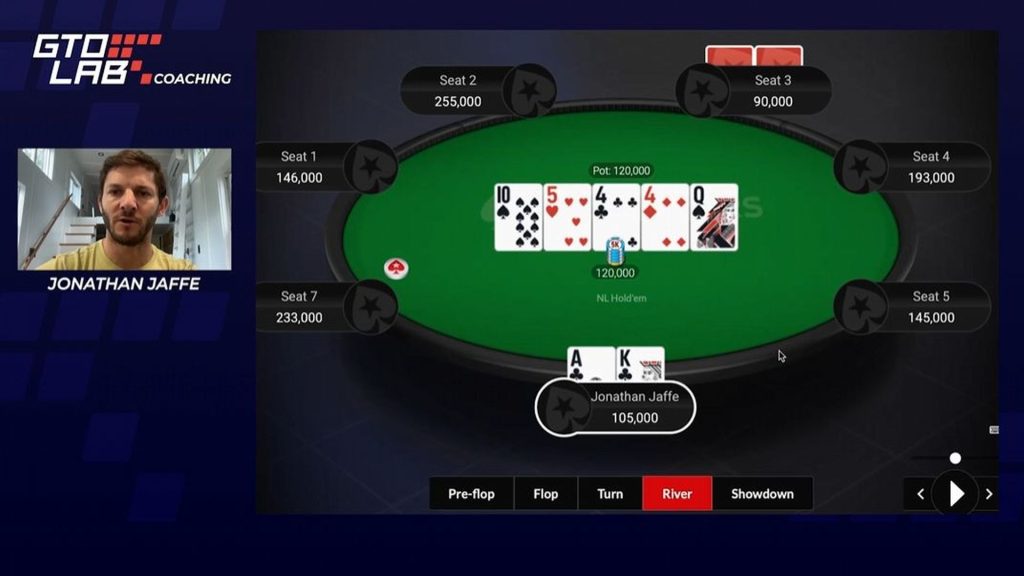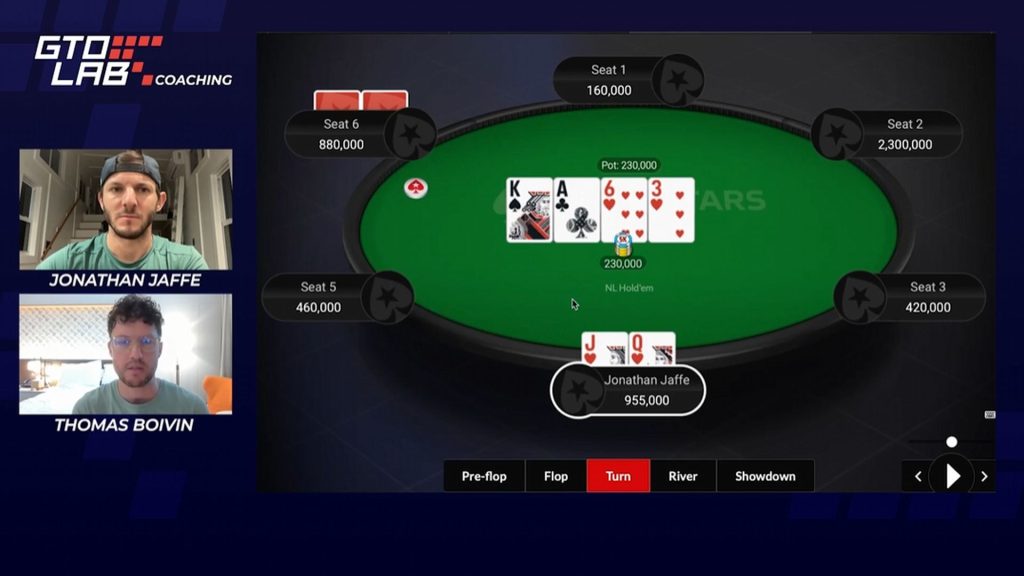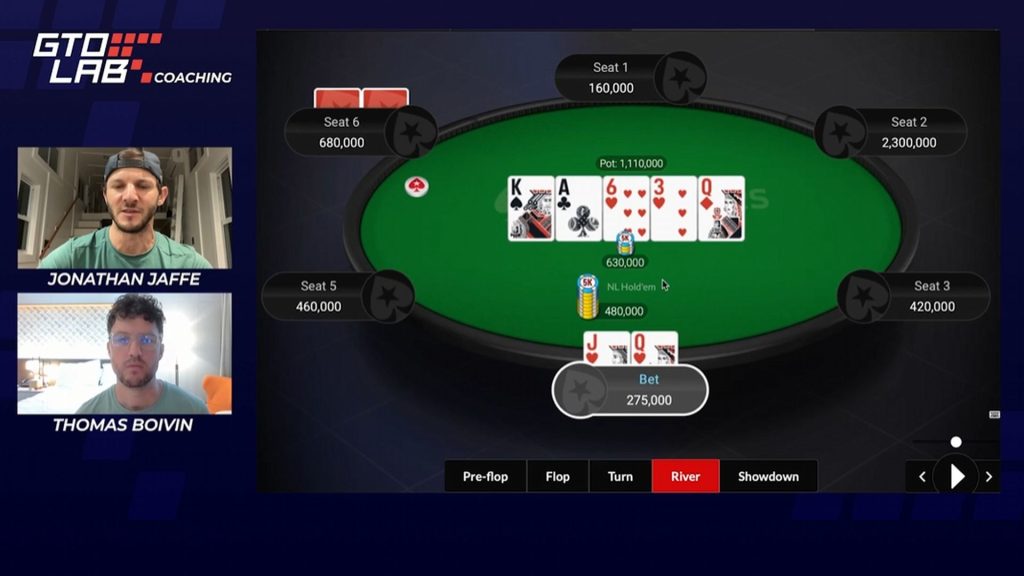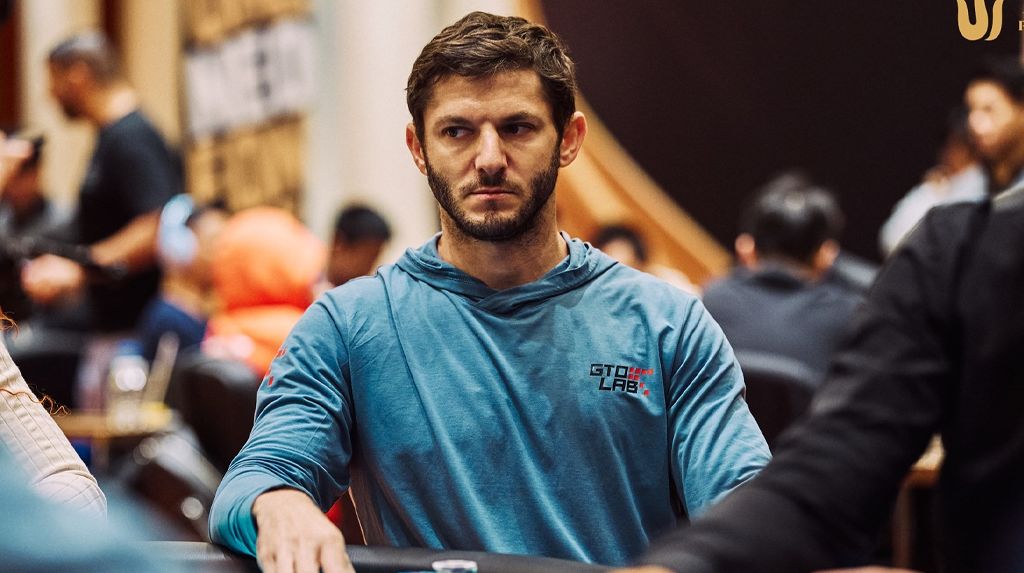Mastering 3 Hands of Bluffing with Jon Jaffe
The world of high stakes poker tournament bluffing is constantly evolving, demanding an intimate understanding of advanced poker theory and the meticulous application of poker solver output. In this deep-dive session, GTO Lab coach Jon Jaffe dissects two pivotal hands from the Triton Poker Super High Roller Series in Jeju, demonstrating how the subtle interplay of range construction, sizing, and crucial ICM considerations dictates optimal decision-making in the most critical spots. This analysis moves beyond fundamental concepts, offering a roadmap for players looking to elevate their game and fully utilize cutting-edge poker training tools.
Hand 1: 60 BB Deep River Aggression
The first hand sets the stage early in a $150k tournament, played 60 BB effective against an elite UTG regular, Jamil Wakil. Jon Jaffe, sitting in the Cutoff, executes a standard 3-bet with AKs. The core challenge of this spot, as Jaffe immediately points out, lies in the integrity of the gto poker ranges used preflop. For the 3-bet to be balanced postflop, it must be properly saturated with suitable bluff combinations, such as KJo and K9s, especially from a positional advantage. A balanced preflop strategy is the non-negotiable foundation for every subsequent decision.
The action moves to a T-5-4 rainbow flop. The UTG opponent, having flatted the 3-bet, employs a high-frequency range check. This prompts an analysis of the GTO response: a high-frequency C-betting strategy. The solver suggests an 80% betting frequency, primarily using a B50 size. This high frequency with a modest size is designed to capture a large share of the pot immediately and deny equity to a broad selection of the opponent’s holdings. Jaffe’s actual B40 sizing is functionally equivalent, emphasizing that small sizing is preferred over polarization in this instance.
The turn brings an offsuit 4, pairing the board but generally reducing the straight/flush draw possibilities. The opponent checks again. Jon Jaffe opts for a B33 sizing, continuing the non-polar approach, designed to extract value and set up an efficient river all-in. Using a poker solver to examine this street confirms that while B50 or a check are preferred, the B25 sizing is close in expected value calculator results provides a good setup for a subsequent street shove.
The river is an offsuit Queen, and Jaffe shoves. This is where the intricacies of river bluffing come into play. The analysis focuses heavily on blocker utility. AKs is a premium bluff candidate because it does not block many of the opponent’s strong Queen-X calling hands (like AQs) while simultaneously blocking a number of missed draws. This bluff ultimately forces a fold, demonstrating a perfect execution of a high-EV river action.

Ready to apply these advanced concepts to your game?
Access this full video and hundreds more GTO deep-dives from the world’s best high-stakes coaches.
Sign Up Now and Transform Your Game
Hand 2: The ICM Conundrum and Risk Premium in Jeju
The second hand transports the viewer to the complex, high-pressure environment of the soft bubble in the $50k event at Triton Jeju. With two-thirds of the field set to cash, ICM poker strategy is now a dominant factor, introducing the critical concept of risk premium. Jon Jaffe opens QJs from CO, consciously tightening his preflop charts to open less frequently into the Big Blind’s massive chip stack.
The flop is A-K-6 with two hearts. Jaffe c-bets and the opponent flats. The turn is the 3 of hearts, completing a possible flush. In consultation with Thomas Boivin, the analysis stresses the shift toward a more polar betting strategy on this highly dynamic board. On the turn, Jaffe uses a B80 sizing, building the pot to prepare for the stack-off on the river.
The river brings an offsuit Queen, an interesting card that improves Jaffe to a pair while simultaneously improving some of the opponent’s possible Ace-X hands to two-pair. With an SPR of roughly 1.1, the stage is set for an all-in confrontation.

The decision on the river is two-fold: identifying the best bluff candidate and selecting the optimal sizing given the ICM overlay. Jaffe’s QJs is confirmed to be an ideal bluff/thin value combo. Thomas Boivin explains that when targeting the opponent’s strong top pair (like A-9), the best bluffs are those that block the opponent’s strongest value hands—sets and two pairs. The Queen in QJs is a powerful blocker for KQ and AQ, and having the Jack of hearts blocks combinations like JT of hearts. By blocking the opponent’s biggest continuing hands while unblocking their folding hands (A-X), the bluff is maximized.
Crucially, Jon Jaffe deviates from a pure solver-mandated all-in shove, opting instead for a slightly smaller bet size. This is a direct application of ICM poker strategy and the risk premium concept. Near the soft bubble, the utility of preserving a functional stack and surviving to the cash-out phase can dramatically outweigh the marginal chip EV gained by attempting a full all-in with a bluff. This subtle sizing adjustment, prioritizing survival utility, is a hallmark of poker tournament strategy at the highest levels.

Integrating GTO and Live Adjustments
The final lesson is the integration of rigid gto poker principles with necessary human adjustments. While the poker solver provides the baseline for expected value calculator results, the live application demands flexibility. Understanding gto poker ranges is not enough; one must understand why the solver chooses a certain frequency or sizing, allowing for informed deviations based on opponent tendencies or, most critically in tournaments, ICM poker strategy. This session provides valuable insights into how to move past memorizing preflop charts and into a truly strategic, advanced level of play.
Take your tournament skills from theory to mastery.
Join GTO Lab today for exclusive access to coach breakdowns, solver strategy, and actionable GTO insights.
